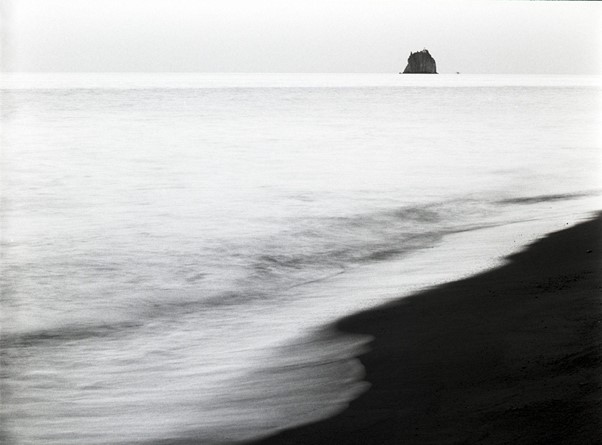
Stromboli, the trail of fire
Keepers of winds, legends and inexhaustible sources of beauty, the Aeolian Islands remain a constantly evolving reality. Abodes of unspoiled nature and a way of life that makes contemplation of places its cornerstone. The following column has no explanatory purpose in the strict sense; it aims to make those who will read travel not only in space, but mainly in the soul of these suspended places, between sea and sky.
A black cone birthed from the waters of the sea, breathing fire and lava. So it seems when seen from a distance in its entirety. It is Stromboli, one of the “seven sisters” of the Aeolian Islands, the most northerly in Sicily and perhaps also one of the most defiladed.
Here it is: the sharp contours, the simple, rough-hewn shape, the black sides, the puffs of smoke-those that Aeolus carefully interpreted as a coffee grounds reader-and those of fire, red and crackling. It is clear that the island is strongly marked by the power of seething magma and dark, scorching sand, by the air that grips you and relentlessly manages your guts and humors, by the roars that often fill the air stunningly. But it is also sunny and fragrant, especially some times at night in dark corners that intoxicate you; it is pulpy with figs and wild asparagus; it is bright and, as parched in summer, so damp on some winter days that you are wet if you just brush against it.
Its roars, together with its eruptions, natural pyrotechnic games, from nightfall , amaze and disturb those who land for the first time on the black island, a favorite destination for those who know how to respect and appreciate the reserved and wild soul of the place.
“Is that all there is?” exclaims an almost incredulous Ingrid Bergman in the Roberto Rossellini-directed masterpiece “Stromboli (Land of God),” having just sailed to the island that during the course of the film will be referred to by the protagonist herself as “cursed.”
Let us deviate for a moment from the sociological context of the 1950s and the cinematic narrative; the image of the island, so damned tied to the elements, could resonate a deep sense of damnation, at times eternal, at times ephemeral and random.
It is all this that gives it the power it wields over those who land there with a soul capable of grasping at least some of it. Because even in Stromboli-incredible to say given the intrusiveness of his personality-it happens that he is not understood. Or rather to be misunderstood. Because here things happen under the will (and control) of the “muntagna“.
You happen to find yourself running barefoot on volcanic pebbles, on its deep black beaches, in stark contrast to the lapis lazuli blue of the sea.
It happens to sit on the old, slightly bumpy pier at sunset and watch as everything turns pink and then dark blue, and then black and dotted with lights.
It happens to remain in contemplation of the Volcano, so feared, loved and admired.
One of the few mountains capable of generating a strong cultic aspect to those who stand before it, knowing that this is where it all begins and ends.
- © Oliviero Olivieri
- © Oliviero Olivieri
by James Gandola
The trip to the Aeolian Islands, accompanied by Giacomo Gandola, also took us to discover other islands, don’t miss them: Alicudi, Vulcano, Filicudi, Panarea, Salina.
And if you can’t wait to visit them, book your tour with Charter Aeolian by clicking here.







